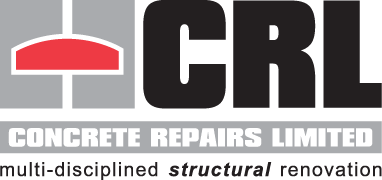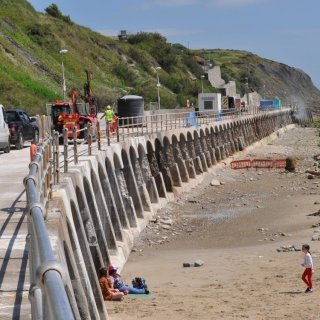Restoring Itchen Quays: CRL undertakes Major Structural Repairs at Southampton Docks
The Itchen Quays (or Berths 30-36) in Southampton were constructed in 1939 and were designed to have ‘dock’ cranes & freight trains running along the length of the quay. Today, the only activity on the quays involves loading new vehicles onto ships for transport to foreign countries.
Following a thorough inspection conducted by Ramboll in 2023, it was determined that significant spalling was occurring, posing a potential risk to the structure. CRL Surveys was appointed by Ramboll to carry out a comprehensive condition survey and investigation of the quays, following which a tender for the works was issued by Associated British Ports (ABP) issued. After a competitive bidding process, CRL emerged as the successful contractor in May 2024, securing the project to carry out the essential restoration work.
The project presented numerous technical challenges, especially due to its location and the harsh environmental conditions.
To allow access to the underside of the quays and allow CRL to undertake the facilitate concrete beam repairs, a temporary access platform was ‘hung’ from the quays by SCA’s Marine Scaffolding division. This allowed unhindered, and safe access to the all the areas requiring repairs. The platform was suspended beneath the deck using modular beams and perforated metal scaffold decks.
Meticulous planning was essential to ensure safe working conditions, with tide schedules carefully analysed to optimize working periods. The project for involved complex procedures, requiring precise adaptation to the site's unique location and environmental factors. The design of the suspended access works was built to withstand submersion, in alignment with the varying tide times.
Hydro-demolition was utilized to carefully remove the damaged concrete. Once the surface was exposed, the rebar was meticulously cleaned and treated with a protective anti-corrosion primer. To prevent the incipient anode effect, sacrificial anodes were strategically placed into the patches. Finally, a micro concrete was applied using a spray method, ensuring a durable and seamless repair.
The proximity to Southampton Docks, one of the UK's largest and busiest ports, added further complexities to the project. The site operated amidst the constant movement of cruise liners, cargo ships, and nearly hourly Red Funnel ferry crossings to the Isle of Wight, necessitating meticulous planning to minimize disruptions.
The collaboration between SCA’s Marine Scaffolding division, CRL, and Associated British Ports ensured that the repair works were carried out efficiently and safely, securing the long-term structural integrity of the quay for continued use for many years to come.

"It was a challenging project carried out under live conditions, made more difficult by having to undertake the repairs under tidal conditions"
Kevin Hodgson | Contracts Manager | CRL






















